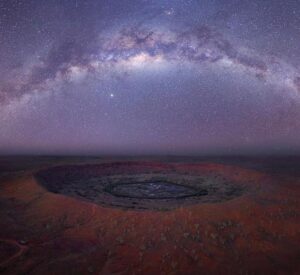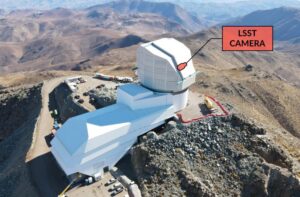One of the most striking revelations from our journey through history is the interconnectedness of these events and their far-reaching impacts on Earth’s ecosystems and inhabitants.
 Pin
Pin Image by wirestock on Freepik
Table of Contents
Overview
The Permian-Triassic extinction event, known as the “Great Dying,” wiped out almost 90% of marine species and drastically altered the course of evolution, paving the way for the rise of the dinosaurs. This catastrophic event demonstrates the profound ripple effects of mass extinctions on global biodiversity and underscores the fragile balance that sustains life on Earth.
 Pin
Pin Image by JONATHAN BLAIR
The Younger Dryas event serves as a poignant example of the rapid and disruptive nature of climate change, with its sudden shift to glacial conditions reshaping landscapes and ecosystems on a global scale. The implications of such abrupt climate shifts reverberate across time, influencing human societies and biodiversity in profound ways and highlighting the vulnerability of Earth’s climate systems to sudden changes.
 Pin
Pin As we delve deeper into these earth-shaking events, we are confronted with the stark reality of humanity’s impact on the planet. The emergence of human activity as a significant geological force, as seen in the Anthropocene, serves as a sobering reminder of our responsibility to protect and preserve the delicate balance of Earth’s ecosystems. The effects of deforestation, pollution, and climate change are altering the planet at an unprecedented pace, threatening biodiversity and the well-being of future generations.
1. Comet Collisions
 Pin
Pin Image by Chil Vera from Pixabay
Comet collisions with Earth have played a significant role in shaping the planet’s geological history. One notable example is the Chicxulub impactor, believed to have struck the Yucatán Peninsula around 66 million years ago. This collision is linked to the mass extinction event that wiped out the dinosaurs and reshaped Earth’s ecosystems. The impact caused widespread wildfires, released immense amounts of dust and debris into the atmosphere, leading to a global cooling effect.
The resulting crater helped scientists uncover crucial insights into the Earth’s past and the dynamics of comet collisions. Such events highlight the profound impact that comet collisions can have on Earth’s geological evolution and emphasize the importance of studying these phenomena for a better understanding of our planet’s history.
2. The Aftermath of the Dinosaur Extinction Event
 Pin
Pin Image by ZolTan from Pixabay
The catastrophic event that wiped out the dinosaurs 65 million years ago, possibly caused by a massive asteroid impact, reshaped Earth’s ecosystems. This event, exemplified by the Chicxulub impactor, led to widespread devastation through wildfires, dust clouds, and a global cooling effect.
The aftermath saw the extinction of the dominant dinosaurs, paving the way for the rise of mammals and the eventual evolution of new species. The impact of this asteroid collision on Earth’s ecosystems demonstrates the interconnectedness of geological events and life forms on our planet. Further study of such events is essential to understanding the complex history and evolution of life on Earth.
3. Ice Ages: The Profound Effects of Glaciation on Earth's Climate and Geography During the Pleistocene Epoch
 Pin
Pin Pleistocene Epoch – Image by canadiangeographic
Periods of extensive glaciation, such as the Pleistocene epoch, drastically altered Earth’s climate and geography. The Pleistocene epoch, lasting from about 2.6 million to 11,700 years ago, is a prime example of an Ice Age. During this time, large ice sheets covered vast areas of land, shaping the planet’s surface and influencing global climate patterns. The advance and retreat of these glaciers had profound effects on sea levels, weather patterns, and the distribution of plant and animal species. The Pleistocene Ice Age reflects the dynamic nature of Earth’s climate system and highlights the significant impact that periods of extensive glaciation can have on shaping the planet’s physical environment and ecosystems.
4. The Formation of the Grand Canyon
 Pin
Pin Grand Canyon – Image by Pete Linforth from Pixabay
 Pin
Pin Colorado River – Image by The Nature Conservancy
Over millions of years, the Colorado River has sculpted the breathtaking Grand Canyon through the process of erosion. As the river flows, it carries sediment that slowly wears away at the rock, gradually deepening and widening the canyon. This process showcases the immense power of water over time, shaping the landscape we see today. For example, the Colorado River has cut through layers of rock over a mile deep, exposing a geological record that spans millions of years. The intricate layers and rock formations within the Grand Canyon stand as a testament to the enduring force of erosion and the remarkable beauty that can result from the natural processes at work over vast spans of time.
5. The Impact of Supervolcano Eruptions
 Pin
Pin Image by Jack Drafahl from Pixabay
Massive supervolcano eruptions, such as those of Yellowstone or Toba, have caused significant global consequences, profoundly altering climate patterns. For example, the eruption of Mount Toba in Indonesia around 74,000 years ago led to a volcanic winter, lowering global temperatures and affecting ecosystems worldwide. These eruptions emit vast amounts of ash and gases into the atmosphere, which can block sunlight, leading to cooling effects on a global scale. The release of sulfur dioxide can also lead to the formation of sulfuric acid aerosols, which contribute to further cooling. Such events serve as powerful reminders of the immense influence that supervolcano eruptions have on the Earth’s climate and the long-lasting impacts they can have on ecosystems and human societies.
6. The Great Oxygenation Event
 Pin
Pin Image by Imperial College London
Approximately 2.4 billion years ago, the emergence of oxygen-producing cyanobacteria marked the Great Oxygenation Event, a pivotal moment in Earth’s history. These ancient photosynthetic organisms began releasing oxygen as a byproduct, gradually changing the composition of the atmosphere. This surge in atmospheric oxygen levels paved the way for the development of complex life forms, revolutionizing the planet’s ecosystems. For instance, the increase in oxygen during this period allowed for the evolution of aerobic organisms, leading to the diversification of life on Earth. The Great Oxygenation Event stands as a critical turning point in Earth’s evolutionary timeline, showcasing the profound impact that simple microorganisms can have on shaping the environment and enabling the flourishing of more advanced life forms.
7. Shifting Horizons: The Impact of Continental Drift
 Pin
Pin Image by rawpixel.com on Freepik
Over billions of years, the continuous movement of tectonic plates has played a crucial role in reshaping Earth’s surface, leading to the formation of mountains and ocean basins. The theory of continental drift, proposed by Alfred Wegener in the early 20th century, explains how continents have shifted positions over time, influencing various geological features. For example, the collision of the Indo-Australian Plate with the Eurasian Plate has resulted in the formation of the Himalayas, one of the world’s most majestic mountain ranges. Additionally, the separation of the African and South American continents along the Mid-Atlantic Ridge has created the vast Atlantic Ocean basin. These geological processes demonstrate how the slow but relentless movement of tectonic plates has sculpted the Earth’s landmasses and oceans, shaping the planet’s diverse landscapes and ecosystems.
8. Unleashing Chaos: The Power of Mega-Tsunamis
 Pin
Pin Image by Jensen Art Co from Pixabay
Mega-tsunamis, enormous waves triggered by underwater landslides or asteroid impacts, have the capacity to dramatically alter coastlines and disrupt marine ecosystems. One of the most notable examples is the Storegga Slide off the coast of Norway around 8,000 years ago. This massive underwater landslide generated a tsunami that inundated coastlines as far away as Scotland, reshaping the surrounding landforms and leaving a lasting impact on the region. Similarly, the Chicxulub asteroid impact that contributed to the extinction of the dinosaurs also produced colossal tsunamis that ravaged coastlines worldwide. These cataclysmic events highlight the immense power of mega-tsunamis in reshaping Earth’s geography and causing significant disruptions to marine life, emphasizing the dynamic and unpredictable forces at play in our planet’s history.
9. Mass Extinctions and Biodiversity Loss
 Pin
Pin Image by A Dinosaur A Day
Mass extinctions, such as the Permian-Triassic extinction event, have left indelible marks on Earth’s biodiversity by causing widespread devastation to various species. The Permian-Triassic extinction, known as the “Great Dying,” annihilated over 90% of marine species and around 70% of terrestrial vertebrate species. This catastrophic event drastically altered the evolutionary trajectory of life on Earth and reshaped entire ecosystems. One prominent example is the proliferation of new life forms following the extinction, leading to the rise of the dinosaurs in the Triassic period. Mass extinctions serve as potent reminders of the fragility of life and the interconnectedness of species, underscoring the profound and lasting effects these events have on Earth’s biodiversity and evolutionary history.
10. Tipping Point: The Impact of Rapid Climate Change
Historical episodes of rapid climate change, such as the Younger Dryas event, underscore the vulnerability of Earth’s climate systems and their far-reaching consequences. The Younger Dryas, occurring around 12,000 years ago, brought about a sudden return to glacial conditions after a period of warming at the end of the last ice age. This abrupt shift in climate had profound impacts on ecosystems and human societies, leading to changes in vegetation patterns, the extinction of megafauna, and potentially influencing early human migration patterns. The Younger Dryas serves as a stark reminder of the delicate balance of Earth’s climate systems and highlights the potential for rapid and disruptive changes with global implications, emphasizing the need for effective climate action and mitigation strategies to safeguard our planet’s future.
 Pin
Pin Image by Belltobias Apc from Pixabay
Conclusion
In exploring the ten earth-shaking events that have sculpted the history of our planet, we are reminded of the incredible forces at play in shaping Earth’s past and present. From massive asteroid impacts to continental drift and ice ages, these events have left lasting imprints on the Earth and influenced the course of evolution and human history. Each event stands as a testament to the dynamic and ever-changing nature of our planet, demonstrating its resilience in the face of cataclysmic events and its ability to rebound and thrive in the aftermath.


































